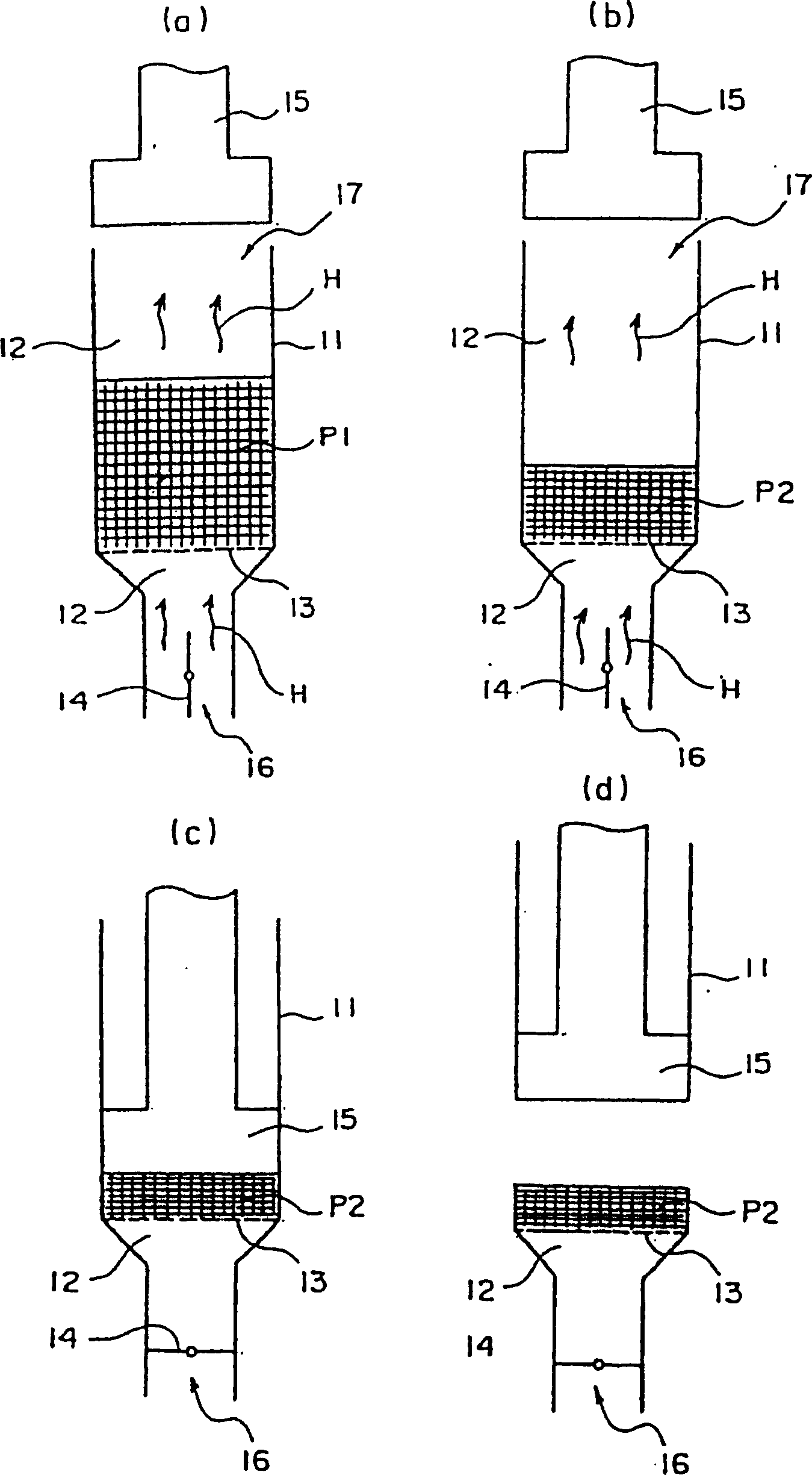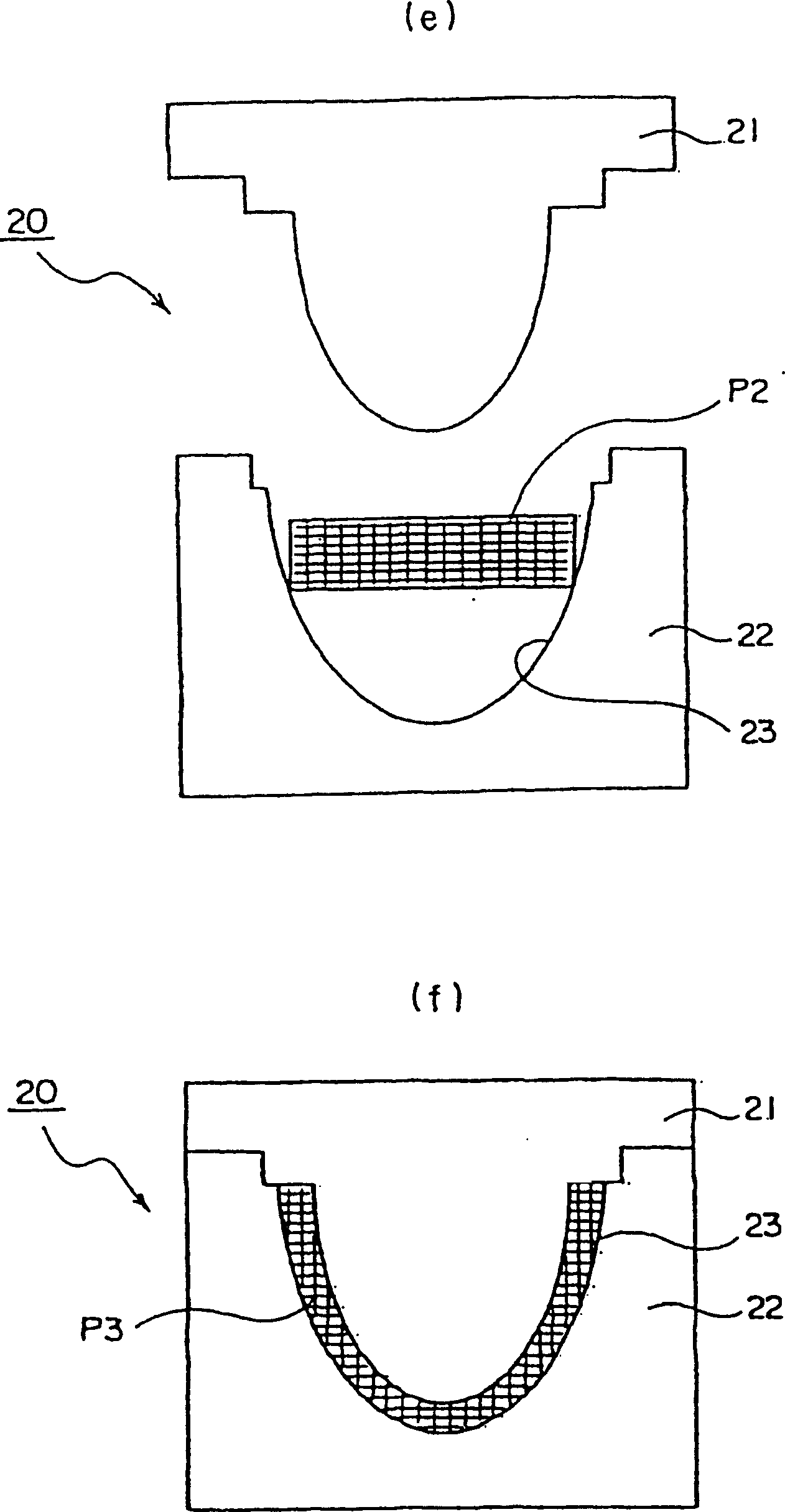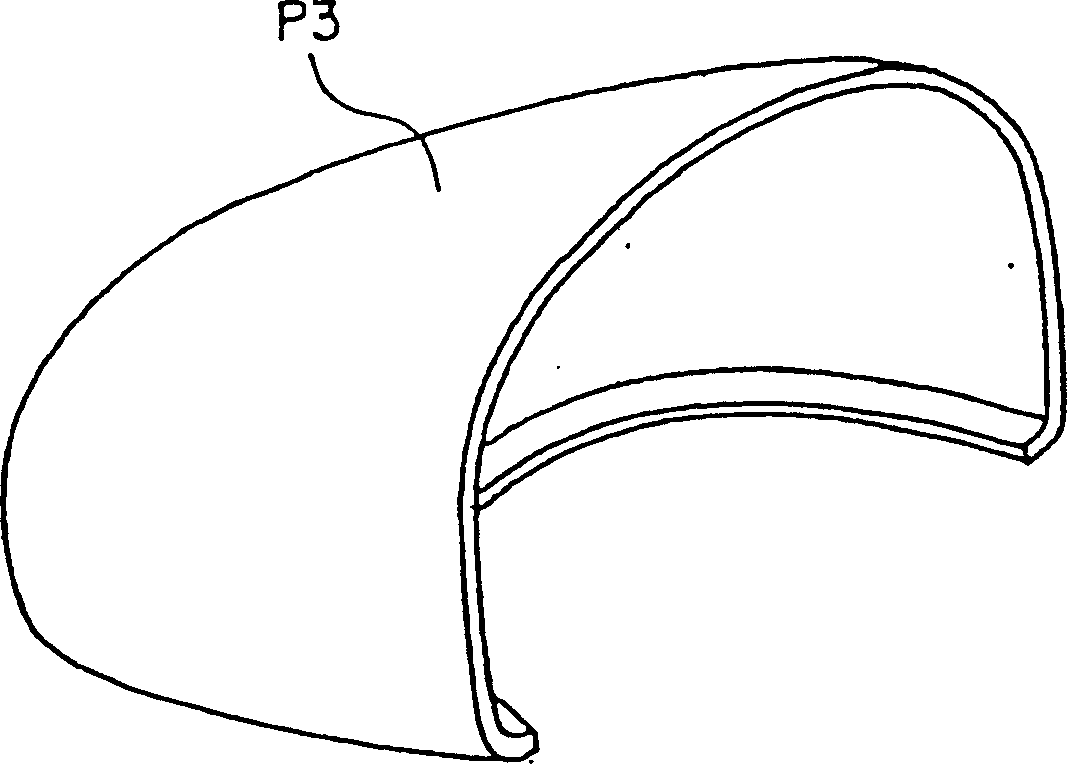Process for producing a fiber-reinforced thermoplastic resin molded product and product thereby produced
A technology for thermoplastic resin and molded products, applied in the field of manufacturing fiber-reinforced thermoplastic resin molded products, can solve problems such as poor productivity and economy, and achieve the effects of reducing thermal aging, improving work efficiency, and excellent detachability
- Summary
- Abstract
- Description
- Claims
- Application Information
AI Technical Summary
Problems solved by technology
Method used
Image
Examples
Embodiment 1
[0096] A single glass fiber strand obtained by bundling 600 monofilaments with an average diameter of 13 micrometers was added to acid-modified molten polypropylene (260° C.) with an M1 (melt index) of 40 for melt impregnation, followed by , pultruded from a spinneret hole with an inner diameter of 0.53 mm at a rate of 50 m / min, and cut into a length of 20 mm with a granulator to obtain a fiber-reinforced thermoplastic resin substrate. The substrate had an average diameter of 0.53 mm, an L / D of 37.7, a glass content of 45.5% by volume, and a resin impregnation rate of 100% (the average number of times n=5, where n is the number of measurements).
[0097] The above-mentioned glass content was obtained by heating the obtained fiber-reinforced thermoplastic resin substrate in an electric furnace at 600°C to burn off the resin, and then, the glass content (% by weight) was calculated from the remaining glass weight, and the value was converted into volume %, according to the speci...
Embodiment 2
[0102] A safety shoe toe core as a molded article was produced in the same manner as in Example 1 except that the L / D of the fiber-reinforced thermoplastic resin base material was 56.6 (cut length: 30 mm). The length of the remaining filaments in the molten mass can maintain 100% of the initial length of the filaments in the substrate. The length of the remaining filaments in the toe core of the safety shoes keeps 95% of the initial length of the filaments in the base material.
Embodiment 3
[0104] A safety shoe toe tip core was made in the same manner as in Example 1, except that an average diameter of 0.70 mm, a glass content of 32.2% by volume, and an L / D of 28.6 (cut length: 20 mm) were used Fiber-reinforced thermoplastic resin substrates. The length of the remaining filaments in the molten mass can maintain 100% of the initial length of the filaments in the substrate. The length of the remaining filaments in the toe tip core of the safety shoes keeps 97% of the initial length of the filaments in the base material.
PUM
| Property | Measurement | Unit |
|---|---|---|
| diameter | aaaaa | aaaaa |
| length | aaaaa | aaaaa |
| diameter | aaaaa | aaaaa |
Abstract
Description
Claims
Application Information
 Login to View More
Login to View More - R&D
- Intellectual Property
- Life Sciences
- Materials
- Tech Scout
- Unparalleled Data Quality
- Higher Quality Content
- 60% Fewer Hallucinations
Browse by: Latest US Patents, China's latest patents, Technical Efficacy Thesaurus, Application Domain, Technology Topic, Popular Technical Reports.
© 2025 PatSnap. All rights reserved.Legal|Privacy policy|Modern Slavery Act Transparency Statement|Sitemap|About US| Contact US: help@patsnap.com



